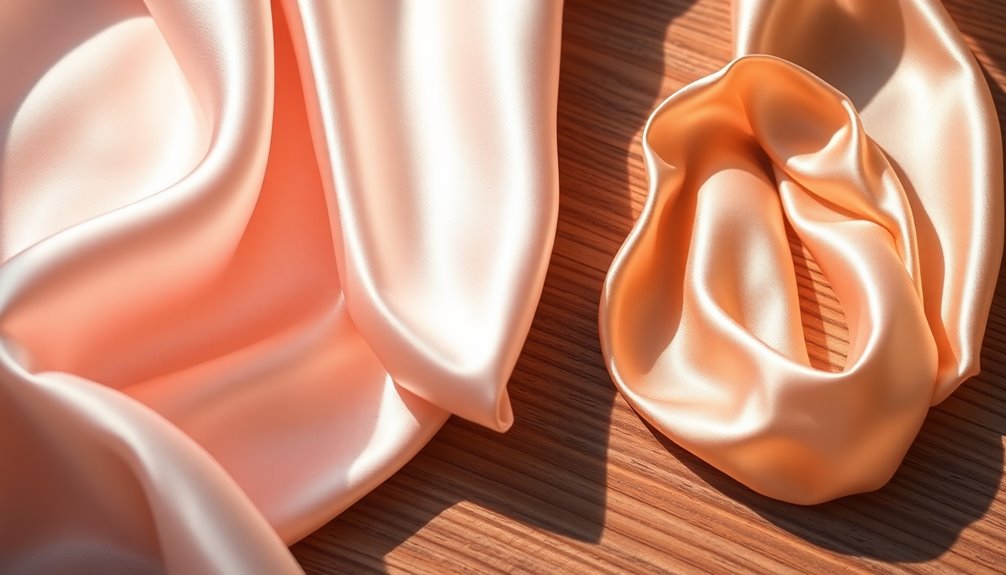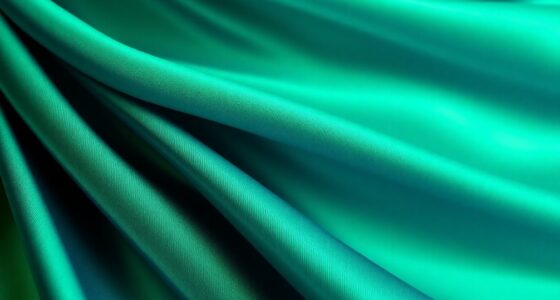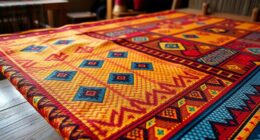Artificial silk might look appealing due to its lower price, but it doesn't match the luxury and durability of real silk. Genuine silk offers exceptional strength, softness, and a unique luster, while artificial silk tends to be less resilient and can contribute to environmental harm. Plus, real silk is hypoallergenic and biodegradable, making it a better choice for both your skin and the planet. Discover more about these differences and what makes natural silk stand out.
Key Takeaways
- Artificial silk is more affordable but lacks the luxury and durability of natural silk, making it less suitable for long-term use.
- Natural silk has a unique sheen and texture, while artificial silk often appears flat and overly smooth, lacking character.
- The production of artificial silk involves harmful chemicals, raising environmental concerns despite being cruelty-free regarding silkworms.
- Real silk is hypoallergenic and moisture-wicking, providing comfort and temperature regulation that artificial silk cannot match.
- Genuine silk has a longer lifespan and is biodegradable, whereas artificial silk contributes to microplastic pollution and takes centuries to decompose.
Understanding the Basics of Silk
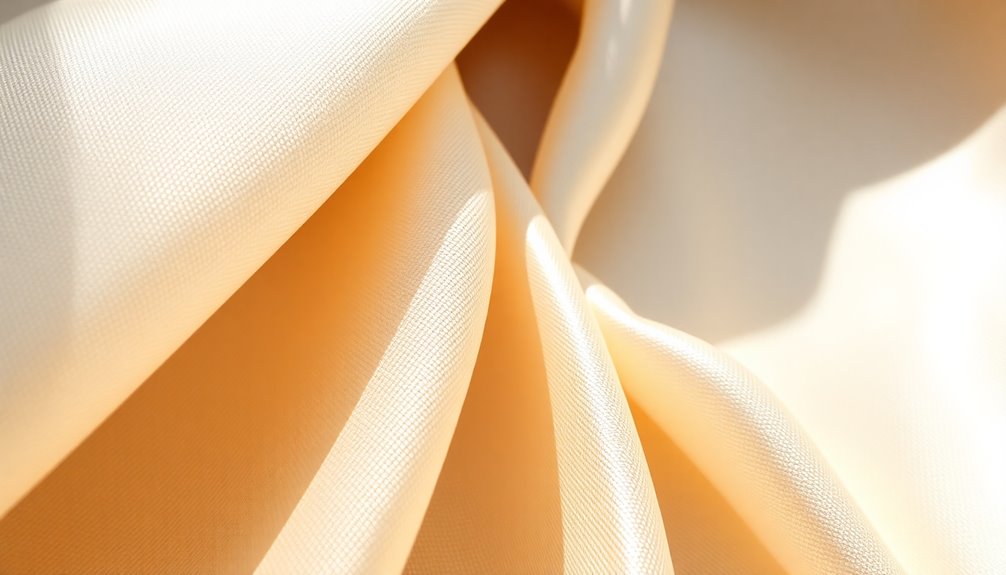
Silk, a luxurious and natural fiber, has captivated people for centuries with its unique qualities. Derived primarily from the cocoons of the mulberry silkworm, silk production involves a meticulous process called sericulture.
You'll find that natural fibers like real silk offer unmatched strength, texture, and luster compared to synthetic silk alternatives developed in the 1900s. While synthetic silk mimics the appearance of silk, it lacks the durability and multi-colored sheen that defines authentic silk due to its triangular prism-like fiber structure.
Understanding these basics helps you appreciate why natural silk, especially mulberry silk, is often more expensive. Knowing how to identify real silk, through methods like the burn test, guarantees you make informed choices in your purchases.
Natural Silk: Types and Characteristics
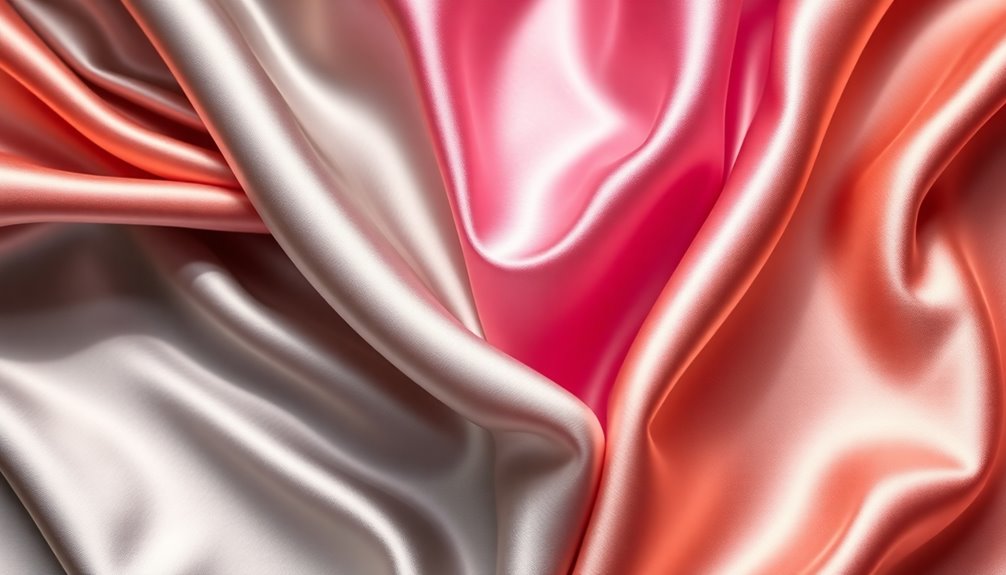
When you think about natural silk, you've got a few main types to contemplate.
Mulberry silk stands out for its luxury and strength, while Tussah and Eri silks offer unique textures and price points.
Each type has distinct characteristics that make natural silk a versatile choice for various applications.
Types of Natural Silk
Natural silk comes in several distinct types, each offering unique characteristics and applications.
Mulberry silk is the most common, prized for its luxurious feel and high quality, making it perfect for formal wear.
Tussah silk, on the other hand, is derived from wild silkworms, providing a coarser texture and rustic appearance suited for upholstery and casual garments.
Eri silk, sourced from eri silkworms, is more affordable and sustainable, often used in home textiles.
Raw silk, unrefined and typically yellowish, is versatile for various clothing and decorative uses.
Finally, there's the rare sea silk, made from the shells of the Pinna nobilis mollusk, celebrated for its exceptional softness and exclusivity in specialty markets.
Characteristics of Natural Silk
Each type of natural silk brings its own set of characteristics that enhance its appeal.
Natural silk, primarily sourced from mulberry silkworm cocoons, offers a luxurious feel and unique properties that set it apart. Its triangular prism-like structure creates a stunning luster, resulting in a multi-colored sheen that synthetic fabrics can't match.
The durability and elasticity of natural silk make it perfect for high-end clothing, ensuring that your garments not only look exquisite but also last for generations with proper care.
Additionally, its hypoallergenic properties contribute to skin health, making it a comfortable choice for sensitive skin.
Whether you're considering sarees or elegant dresses, the charm of natural silk is undeniable.
What Is Artificial Silk?

Artificial silk, often referred to as faux silk, offers a budget-friendly alternative to its luxurious counterpart.
It's primarily made from a blend of natural fibers and synthetic fibers, like rayon and nylon, developed in the early 1900s.
Here are some key points about artificial silk:
- Manufacturing Process: Unlike natural silk, which is produced by silkworms, artificial silk is machine-made, making it faster and more cost-effective.
- Environmental Impact: It's derived from cellulose, usually sourced from wood pulp, making it a more environmentally friendly option in some cases.
- Quality Differences: While it closely resembles real silk in appearance, it lacks the unique luster and durability of natural silk, leading to noticeable differences in quality.
Key Differences Between Natural and Artificial Silk
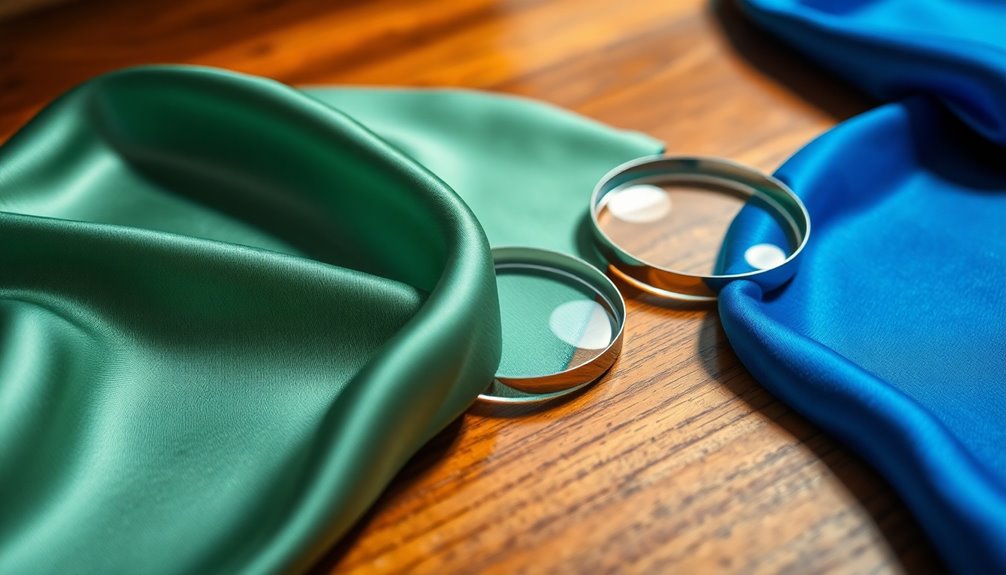
When comparing silk types, you'll notice distinct differences that can influence your choice.
Natural silk comes from the cocoons of mulberry silkworms, while artificial silk is made from synthetic fibers like polyester and rayon. The production process for natural silk is labor-intensive and costly, making it pricier than artificial silk, which is cheaper to produce mechanically.
Real silk showcases a unique sheen due to its triangular prism structure, offering depth and variation, whereas artificial silk typically has a uniform shine.
Additionally, natural silk boasts a soft, smooth, and warm tactile feel that enhances comfort, while artificial silk often feels cooler and lacks the luxurious sensation you'd expect.
These differences can considerably affect your overall experience with silk products.
The Pros and Cons of Each Silk Type

While both natural and artificial silk have their unique advantages and drawbacks, understanding these can help you make an informed choice.
Here's a quick breakdown of the pros and cons:
- Natural Silk: Offers a luxurious feel, multi-colored luster, and durability. It's hypoallergenic and moisture-wicking, making it ideal for skin health.
- Artificial Silk: Much cheaper and easier to produce, making it accessible. It can mimic the look of quality silk but often lacks breathability and warmth.
- Overall: Natural silk is best for high-end silk products, while artificial silk serves as a budget-friendly alternative.
Ultimately, the choice between natural silk vs. artificial silk depends on your needs and preferences regarding comfort, longevity, and budget.
How to Identify Real Silk
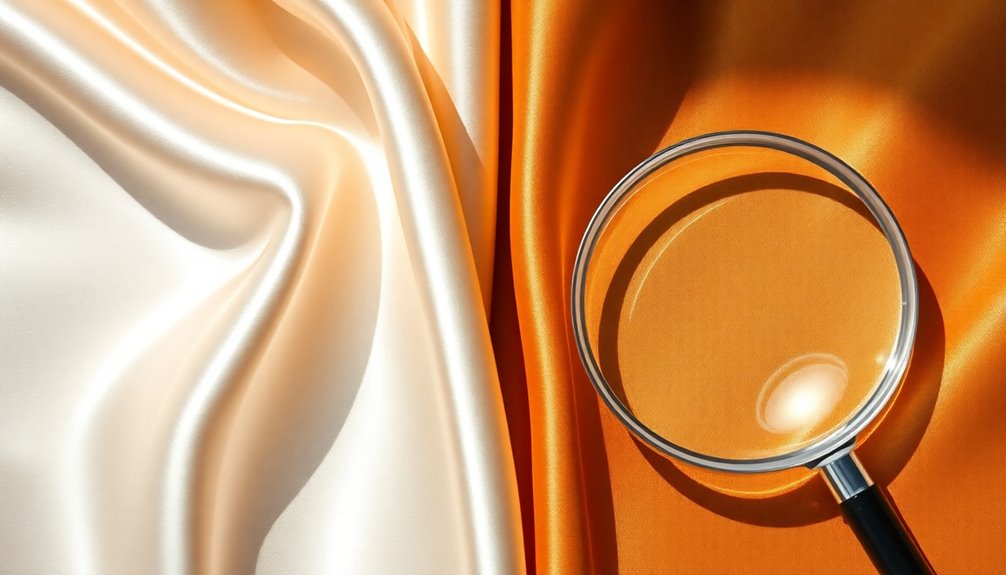
When you're trying to identify real silk, start by considering the price—it's usually much higher than synthetic options.
Next, take a closer look at the fabric's sheen and texture; authentic silk has a unique shimmer and some subtle imperfections.
Finally, don't hesitate to perform a quick texture and feel test to see if it warms up to your body temperature.
Price Comparison Analysis
Identifying real silk can often come down to a careful price comparison. Since authentic silk typically costs at least ten times more to produce than synthetic fibers, being aware of price points is essential.
Here are three tips to help you identify real silk:
- Price Range: If the price seems too good to be true, it probably is. Genuine silk garments usually start around $100, while synthetic options can be as low as $10.
- Momme Weight: Check the momme count; genuine silk ranges from 6-30 momme, with higher counts indicating better quality and price.
- Brand Legitimacy: Research brands to verify they're not inflating prices on artificial silk while claiming authenticity.
Visual Inspection Techniques
How can you tell if that luxurious fabric is truly silk? Start with a visual inspection. Real silk features a unique triangular prism-like structure that gives it a multicolored sheen, unlike the consistent shine of artificial silk. Look for slight imperfections in the weave; authentic silk often has these hand-made nuances, while synthetic silk is typically flawless. Observe how the fabric changes luster from different angles—genuine silk will shift, while fake silk remains uniform. Finally, remember that real silk tends to breathe and drape better, creating an elegant flow that artificial silk lacks.
| Feature | Real Silk | Artificial Silk |
|---|---|---|
| Shine | Multicolored sheen | Consistent shine |
| Weave Quality | Slight imperfections | Flawless |
| Luster Variation | Changes with angle | Uniform appearance |
| Breathability | Breathes well | Stiffer, less fluid |
| Draping Quality | Elegant drape | Stiff drape |
Texture and Feel Test
After visually inspecting the fabric, the next step in determining if it's real silk involves a texture and feel test.
Pay attention to these key characteristics:
- Sound: Scrunch the fabric; real silk produces a distinctive crunching sound, while artificial silk feels overly smooth and silent.
- Luster: Observe the shine; authentic silk has a unique luster with a multi-colored sheen, unlike the flat shine of synthetic alternatives.
- Temperature: Touch the fabric; real silk warms quickly to your body temperature, whereas artificial silk feels cool and doesn't adapt.
For a definitive check, consider the burn test: real silk burns slowly, smells like burning hair, and leaves brittle ash, while synthetic silk burns fast, smells like burning plastic, and produces black smoke.
Common Misconceptions About Artificial Silk
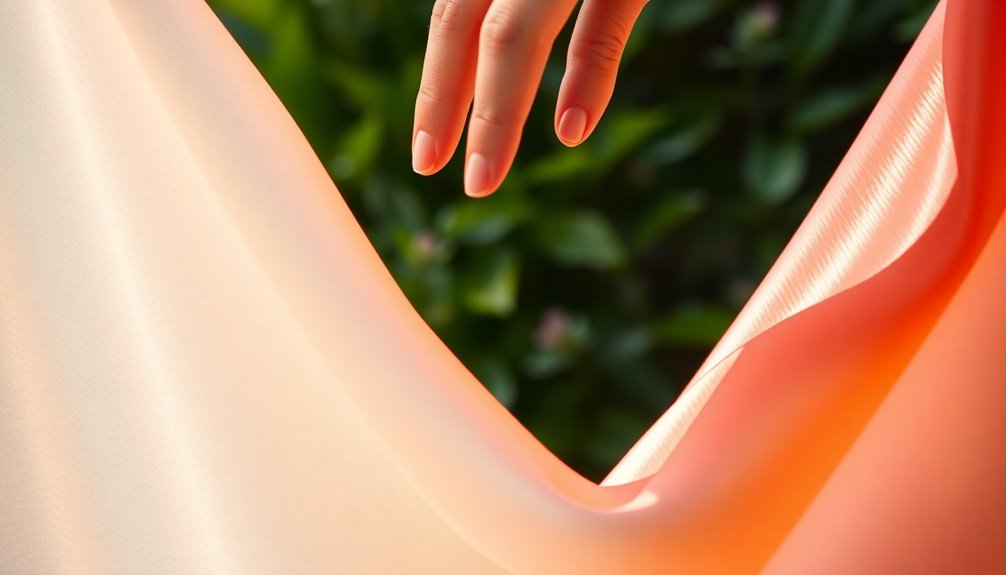
Why do so many people confuse artificial silk with its natural counterpart? A major misconception is that artificial silk, made from synthetic fibers like polyester and nylon, offers the same durability and texture as natural silk.
While it may look similar initially, artificial silk lacks the unique multi-dimensional luster and softness of real silk. Additionally, many believe it's a more sustainable choice, but the production of synthetic fibers often involves harmful chemicals, raising significant environmental impacts.
Furthermore, artificial silk is typically less durable, prone to damage from heat and moisture. Just because it's cruelty-free regarding silkworms doesn't mean its production is environmentally friendly.
Understanding these differences helps you make more informed choices.
Benefits of Choosing Natural Silk
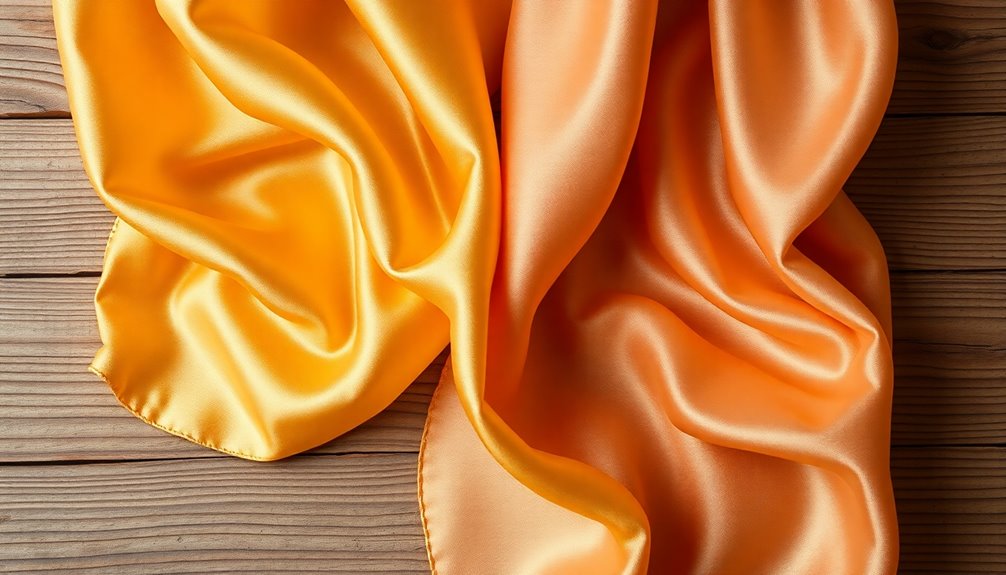
Choosing natural silk brings a sense of luxury and comfort that few other fabrics can match. Here are some key benefits of opting for natural silk:
- Hypoallergenic: Natural silk is perfect for those with sensitive skin or allergies, reducing irritation and discomfort.
- Moisture-wicking properties: It effectively regulates body temperature, keeping you comfortable in any climate.
- Durability: Known for its exceptional strength, natural silk can last for generations with proper care, making it a wise investment.
Additionally, natural silk is biodegradable, offering an eco-friendly option compared to synthetic fabrics.
When you choose natural silk, you embrace a sustainable, luxurious, and comfortable lifestyle that enhances your wardrobe while caring for the planet.
The Impact of Artificial Silk on the Environment
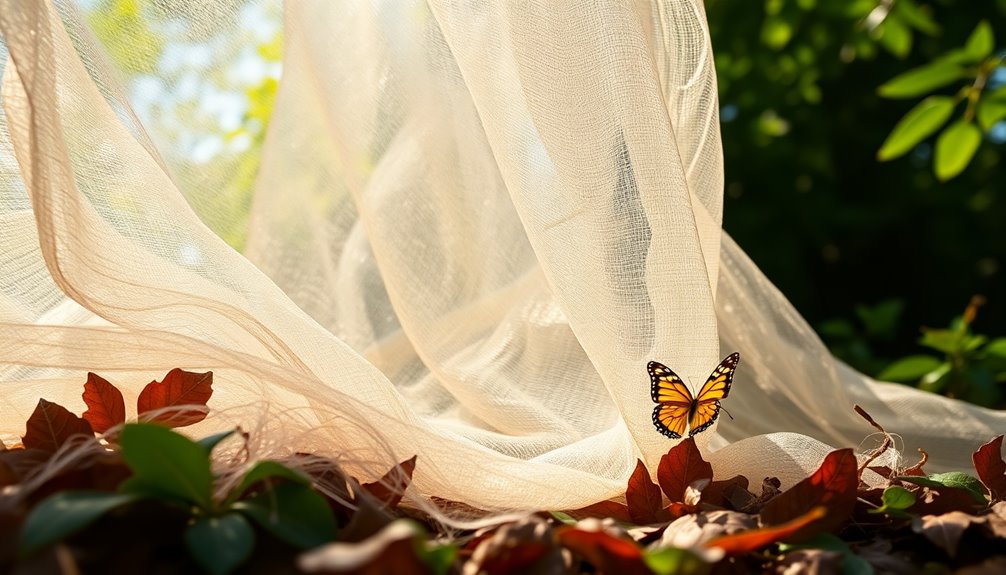
While artificial silk may mimic the luxurious feel of its natural counterpart, its impact on the environment is far from glamorous.
Made from synthetic fibers like polyester and nylon, it contributes greatly to microplastic pollution, with around 35% of microplastics in oceans originating from synthetic clothing.
The production process demands large amounts of water and harmful chemicals, leading to water contamination and resource depletion.
Unlike biodegradable natural silk, artificial silk can take centuries to decompose, worsening landfill issues.
Additionally, manufacturing synthetic fibers relies heavily on fossil fuels, increasing greenhouse gas emissions and raising environmental concerns about non-renewable resource use.
Ultimately, choosing artificial silk may come with a hefty environmental price tag you mightn't want to pay.
Making an Informed Choice: Real vs. Fake Silk
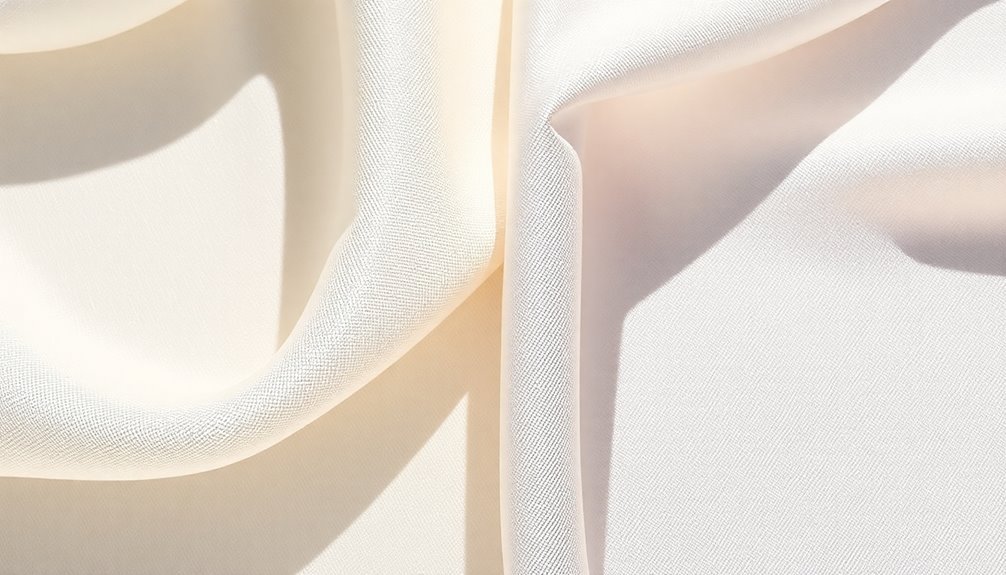
When choosing between real and artificial silk, price is often your first clue; genuine silk costs considerably more.
You'll also notice that natural silk has a unique texture and luster, while fake silk tends to feel overly smooth and uniform.
Understanding these differences can help you make a more informed decision.
Price Comparison Factors
Steering through the price differences between real and artificial silk can feel overwhelming, but understanding key factors can simplify your decision.
Here's what to take into account in your price comparison:
- Production Costs: Real silk, especially mulberry silk, costs at least ten times more to produce than artificial silk, which is often made from cheaper synthetic fibers.
- Quality Indicators: Genuine silk products often come with a higher price tag due to their luxurious feel and durability, while lower-priced items may indicate artificial silk or blends.
- Silk Certification: Look for the Silk Mark certification to verify you're getting authentic silk that meets high standards of quality, justifying its higher price.
Texture and Feel Differences
The texture and feel of silk can greatly influence your choice between real and artificial options.
Natural silk boasts a unique, soft texture with subtle imperfections, while artificial silk feels overly smooth due to mass production.
You'll notice that genuine silk has a multi-colored sheen from its triangular prism structure, creating a vibrant appearance that's absent in synthetic fabrics.
When you scrunch real silk, it produces a soft, gentle sound, adding to its charm, while artificial silk remains silent.
Plus, real silk quickly warms to your body temperature, offering a luxurious feel, whereas synthetic silk stays cool.
Finally, natural silk is more durable and resistant to tearing, while artificial silk may fray and damage over time.
Frequently Asked Questions
What Is the Cheap Version of Silk Called?
The cheap version of silk is commonly called artificial silk.
You'll find it made from synthetic fibers like polyester and nylon, offering a more affordable alternative to natural silk.
While it imitates the feel of silk, it lacks the unique shine and durability of the real thing.
If you're looking for budget-friendly fabric, artificial silk might suit your needs, but keep in mind it won't provide the same luxurious experience as genuine silk.
What Are the Negatives of Silk?
When considering the negatives of silk, you might find it's prone to damage, requiring careful handling.
It can also be expensive, which mightn't fit your budget. Additionally, silk's tendency to absorb moisture can lead to discomfort in humid conditions.
You could also experience allergies, as some people are sensitive to silk's natural fibers.
Finally, silk needs special cleaning, which can be a hassle compared to more durable, easy-care fabrics.
Is Synthetic Silk as Good as Real Silk?
When you compare synthetic silk to real silk, you'll notice some key differences.
While synthetic silk is cheaper and can mimic the look of natural silk, it often falls short regarding quality. You might find it less durable and possibly irritating to your skin.
Real silk offers a unique warmth, breathability, and luxurious feel that synthetic versions just can't fully replicate.
What Is the Difference Between Pure Silk and Artificial Silk?
When you compare pure silk and artificial silk, you'll notice a few key differences.
Pure silk, made from natural fibers, has a unique sheen and soft, warm feel that adapts to your body temperature.
In contrast, artificial silk, crafted from synthetic materials, often looks flawless but lacks depth and warmth.
Its consistent, dull shine and cooler touch don't quite match the luxurious experience that pure silk offers, making it a distinct choice.
Conclusion
In the tapestry of choices, you'll find both natural and artificial silk weaving their own stories. While the genuine article offers unmatched elegance and durability, artificial silk can charm with its affordability and versatility. Embrace the allure of real silk for its luxurious feel, or opt for the synthetic alternative for practicality. Ultimately, it's about finding what drapes best in your life's fabric. Choose wisely, and let your personal style shine through, no matter the thread.
